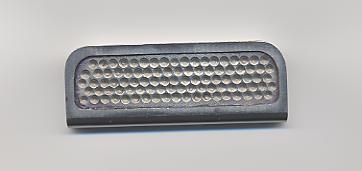
1893
Joseph Kekuku (1874-1932) begins experimenting with his guitar by trying the effect of a comb laid on the strings with the left hand. Later he begins using his pocket-knife, then a piece of flat steel.

It is generally supposed that Kekuku practiced the "steel guitar", or "slide guitar", secretly at his home for about seven years before coming to America.
Kekuku switches from gut to wire strings because they sustain the tones of the metal bar longer.

(Actually, the inventor of the steel guitar is a subject of contention. Some believe it was Gabriel Davion, who was an Indian, kidnapped by a sea captain and transported to Hawaii. Charles E. King, the Hawaiian composer, says he saw Davion playing his steel guitar in 1884 on the island of Maui. There exists an ancient Indian instrument called Gottuvadyam and a South Indian Vina called a Sarasvati Vina. Both are played with a hard, egg-shaped piece of glass. It is thought that, perhaps, Gabriel Davion simply transferred the technique to the guitar).
Kika Kila means essentially a guitar (kika) with strings raised above the fretboard and played with a steel bar (kila) manipulated with the left hand. In other words, Hawaiian steel guitars are merely guitars with metal strings and raised nuts, played with flat metal bars and fingerpicks, and tuned in open tunings. Obviously, the slide or "steel" style of playing would have evolved eventually as a matter of time and course, since the slack-key open tuning allowed the strings to be barred at any place on the fretboard to create a viable chord.
Needless to say, like slack-key itself, this style of playing could be accomplished best on guitars with steel strings. The term "steel-guitar", or "Hawaiian-steel", however, refers to the steel bar held with the left hand, and not to the steel strings.
